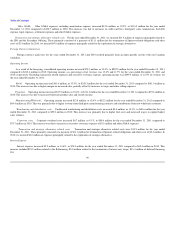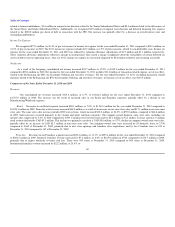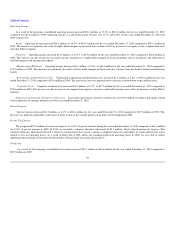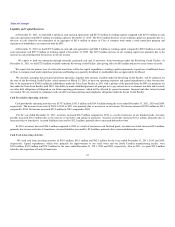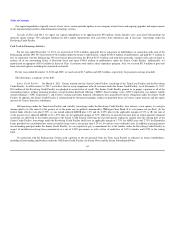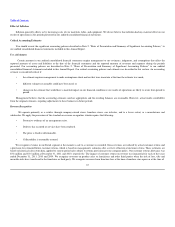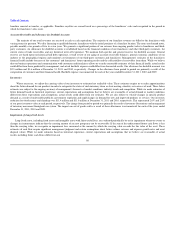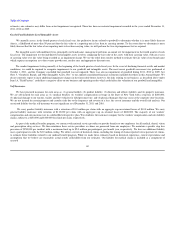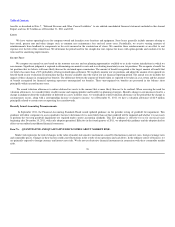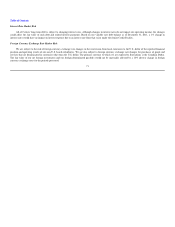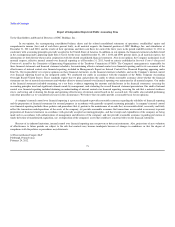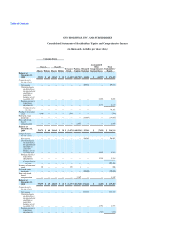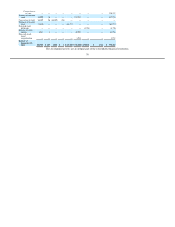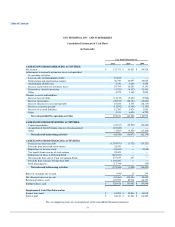GNC 2012 Annual Report Download - page 72
Download and view the complete annual report
Please find page 72 of the 2012 GNC annual report below. You can navigate through the pages in the report by either clicking on the pages listed below, or by using the keyword search tool below to find specific information within the annual report.
Table of Contents
estimates, our estimates may differ from actual impairment recognized. There has been no material impairment recorded in the years ended December 31,
2011, 2010 or 2009.
Goodwill and Indefinite-Lived Intangible Assets
We annually assess, in the fourth quarter of each fiscal year, the qualitative factors related to goodwill to determine whether it is more likely than not
(that is, a likelihood of more than 50 percent) that the fair value of a reporting unit is less than its carrying amount. To the extent that we determine it more
likely than not that the fair value of our reporting units is less than carrying value, we will perform the two-step impairment test as required.
For intangible assets with indefinite lives, principally our brand name, management performs an annual test for impairment in the fourth quarter of each
fiscal year. The impairment test for indefinite-lived intangible assets involves comparing the fair value of the assets with their carrying value, with any excess
of carrying value over fair value being recorded as an impairment charge. We use the relief from royalty method to estimate the fair value of our brand name
which requires assumptions as to the revenue growth rates, royalty rates and appropriate discount rates.
We conduct impairment testing annually at the beginning of the fourth quarter of each fiscal year. In the event of declining financial results and market
conditions, we could be required to recognize impairments to our goodwill and intangible assets. The most recent goodwill assessment was performed at
October 1, 2011, and the Company concluded that goodwill was not impaired. There was also no impairment of goodwill during 2011, 2010 or 2009. See
Note 5, "Goodwill, Brands, and Other Intangible Assets, Net," to our audited consolidated financial statements included elsewhere in this Annual Report. We
do not currently expect to incur additional impairment charges in the foreseeable future; however, the risks relating to our business, as described above under
Item 1A, "Risk Factors," could have a negative effect on our business and operating results which could affect the valuation of our goodwill and intangibles.
Self-Insurance
We have procured insurance for such areas as: (1) general liability; (2) product liability; (3) directors and officers liability; and (4) property insurance.
We are self-insured for such areas as: (1) medical benefits; (2) workers' compensation coverage in the State of New York with a stop loss of $250,000;
(3) physical damage to our tractors, trailers and fleet vehicles for field personnel use; and (4) physical damages that may occur at the corporate store locations.
We are not insured for certain property and casualty risks due to the frequency and severity of a loss, the cost of insurance and the overall risk analysis. Our
associated liability for this self-insurance was not significant as of December 31, 2011 and 2010.
We carry product liability insurance with a retention of $3.0 million per claim with an aggregate cap on retained losses of $10.0 million. We carry
general liability insurance with retention of $110,000 per claim with an aggregate cap on retained losses of $600,000. The majority of our workers'
compensation and auto insurance are in a deductible/retrospective plan. We reimburse the insurance company for the workers' compensation and auto liability
claims, subject to a $250,000 and $100,000 loss limit per claim, respectively.
As part of the medical benefits program, we contract with national service providers to provide benefits to our employees for all medical, dental, vision
and prescription drug services. We then reimburse these service providers as claims are processed from our employees. We maintain a specific stop loss
provision of $250,000 per incident with a maximum limit up to $2.0 million per participant, per benefit year, respectively. We have no additional liability
once a participant exceeds the $2.0 million ceiling. We utilize a review of historical claims, including the timing of claims reported versus payment of claims,
to estimate future liabilities related to our medical benefit program. While we make these estimates based on historical experience, current expectations and
assumptions that we believe are reasonable, actual results could differ from our estimates. Our liability for medical claims is included as a component of
accrued
69


